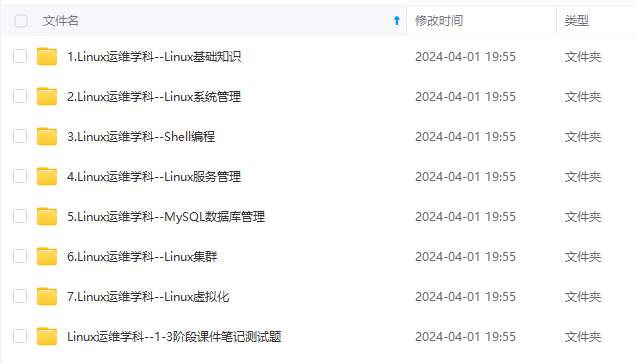02.k8s中EFK收集服务日志
前言:前一篇文章《helm部署ELK及pod日志收集》从平台层面收集了k8s所有pod的日志(实际是汇集了每个节点上docker打印的所有容器日志),但是这仅限于容器前台输出的日志。对于服务自己打印到文件的分级日志则需要我们用其他方式收集。本章提供一个方案,收集服务打印到指定目录的所有日志。1. 环境说明ELK已部署如下:[root@DoM01 ~]# kubectl get service -n
·
前言:
前一篇文章《helm部署ELK及pod日志收集》从平台层面收集了k8s所有pod的日志(实际是汇集了每个节点上docker打印的所有容器日志),但是这仅限于容器前台输出的日志。对于服务自己打印到文件的分级日志则需要我们用其他方式收集。本章提供一个方案,收集服务打印到指定目录的所有日志。
1. 环境说明
ELK已部署如下:
[root@DoM01 ~]# kubectl get service -n elk
NAME TYPE CLUSTER-IP EXTERNAL-IP PORT(S) AGE
elasticsearch NodePort 10.1.4.111 <none> 9200:30028/TCP 2d
elasticsearch-master ClusterIP 10.1.104.188 <none> 9200/TCP,9300/TCP 30h
elasticsearch-master-headless ClusterIP None <none> 9200/TCP,9300/TCP 30h
kibana-kibana NodePort 10.1.43.153 <none> 5601:30026/TCP 2d
logstash-logstash-headless ClusterIP None <none> 9600/TCP 2d
2. 收集方案
2.1 方案说明
1)创建一个pod,其中包含两个容器,分别是主服务(以nginx为例)和filebeat
2)filebeat和nginx共享日志目录,nginx写入filebeat收集
3)将filebeat的配置文件挂载为configmap便于修改
2.2 方案示例
- yml文件
apiVersion: v1
kind: Pod
metadata:
name: nginx-filebeat
namespace: test
spec:
containers:
- name: nginx
image: harbocto.xxx.com.cn/public/nginx
env:
- name: TZ
value: Asia/Shanghai
volumeMounts:
- mountPath: /var/log/nginx/
name: nginxlog
- name: filebeat
image: harbocto.xxx.com.cn/public/filebeat:8.0.0-SNAPSHOT
env:
- name: TZ
value: Asia/Shanghai
volumeMounts:
- mountPath: /var/log/nginx/
name: nginxlog
- mountPath: /usr/share/filebeat/filebeat.yml
name: filebeatyml
subPath: filebeat.yml
volumes:
- name: nginxlog
persistentVolumeClaim:
claimName: nginxlog
- name: filebeatyml
configMap:
name: filebeat
---
apiVersion: v1
kind: ConfigMap
metadata:
name: filebeat
namespace: test
data:
filebeat.yml: |
filebeat.inputs:
- type: log
enabled: true
paths:
- /var/log/nginx/*.log
setup.ilm.enabled: false
setup.template.name: "nginx-dev"
setup.template.pattern: "nginx-dev-*"
output.elasticsearch:
host: 'nginx_test'
hosts: '${ELASTICSEARCH_HOSTS:elasticsearch-master.elk:9200}'
index: "nginx-dev-%{+yyyy.MM.dd}"
---
kind: PersistentVolumeClaim
apiVersion: v1
metadata:
name: nginxlog
namespace: test
spec:
accessModes:
- ReadWriteOnce
resources:
requests:
storage: 5Gi
- 启动
[root@DoM01 ~]# kubectl create namespace test
[root@DoM01 ~]# kubectl create -f nginx-filebeat-test.yml
pod/nginx-filebeat created
configmap/filebeat created
[root@DoM01 ~]# kubectl get pod -n test
NAME READY STATUS RESTARTS AGE
nginx-filebeat 2/2 Running 0 35m
2.3 filebeat的配置文件
- 上边comfigmap的说明
apiVersion: v1
kind: ConfigMap
metadata:
name: filebeat
namespace: test
data:
# filebeat.yml是filebeat的配置文件名(关于key名参见《k8s对象-congmap》,此处不赘述)
filebeat.yml: |
filebeat.inputs:
- type: log
enabled: true
# 指明收集日志的目录
paths:
- /var/log/nginx/*.log
#索引生命管理必须关闭,否则忽略自定义索引
setup.ilm.enabled: false
#自定义索引模板
setup.template.name: "nginx-dev"
setup.template.pattern: "nginx-dev-*"
output.elasticsearch:
# 链接elasticsearch,前文环境说明里可以看到改url
hosts: '${ELASTICSEARCH_HOSTS:elasticsearch-master.elk:9200}'
#自定义索引
index: "nginx-dev-%{+yyyy.MM.dd}"
index: "filebeat-%{[agent.version]}-%{+yyyy.MM.dd}
- 配置文件模板
进入filebeat容器,可以看到filebeat.reference.yml文件,该文件记录了目前可用的所有配置项。
3. 结果查看
- web查看
如上图,可见自定义索引已经可以看到了

- 查看收集到的日志
创建一个index,然后随便往日志目录下写了写东西,可以看到日志收集到了
更多推荐
 已为社区贡献11条内容
已为社区贡献11条内容










所有评论(0)